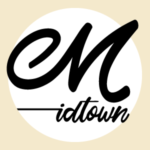Most Californians are aware of the homelessness crisis affecting the state. It’s very difficult not to be. As of 2022, roughly one-third of all unhoused people in the United States lived in California. Since 2020, California’s homeless population has increased by 6%, a figure that dwarfs the 0.4% increase nationally.
But you don’t have to be a statistician to grasp the scope of the problem. Just drive through any major California city, such as Sacramento, where homelessness has increased by 67% in the last three years. You will see the encampments. You will be confronted with the daily misery of life on streets.
But within this grim reality are nested other related issues many people don’t think about. One of these is end-of-life care. What happens when a homeless person becomes terminally ill?
End-of-life care is a thorny subject even for housed individuals—replete with ethical and practical questions about when to treat, how much to treat, and even where to treat—but it becomes particularly complex for those without a permanent address or steady income.
“Homeless people tend to have very complicated issues,” says Carole Fisher, President of the National Partnership for Healthcare and Hospice Innovation. “First and foremost, they aren’t in one place long enough to receive care. And often they don’t have technological resources like a cell phone or the internet. And lastly, they tend to suffer from mental challenges and social isolation. So they require a lot of intervention.”
So how do you provide this intervention?
One organization, called Joshua’s House, is addressing this question. Joshua’s House will be opening in 2023, after six years of fundraising and development. The brainchild of Marlene von Friederichs-Fitzwater, a former professor at the UC Davis School of Medicine, Joshua’s House will provide five three-bedroom houses where 15 terminally ill homeless people can receive end-of-life care. It will be the first hospice dedicated specifically to the homeless on the entire West Coast.
“We can’t deliver care under a bridge or at the banks of the river. … By having Joshua’s House, it’ll be much easier because we will have a place to house (people).”
Craig Dresang, CEO of YoloCares
The facilities will be staffed and run by YoloCares, a hospice program serving Sacramento Valley for over 45 years.
“We take care of homeless folks already,” says Craig Dresang, CEO of YoloCares. “But before we can provide care, we have to find safe housing for them first. We can’t deliver care under a bridge or at the banks of the river. So when we get a referral for somebody who’s been discharged from the hospital, and they don’t live in a home, our first order of business is to try and get them housing, and then begin to provide care. By having Joshua’s House, it’ll be much easier because we will have a place to house them.”
In addition to helping the homeless to die with dignity, on their own terms, there is a more practical pitch for Joshua’s House. Mike Milward, the CEO of the California Hospice Network, is well aware of the realities of health care in the United States. It’s an expensive industry, one he goes so far as to call a “contact sport.” That’s why it’s so important to stress the economic benefits of hospice care.
“There’s a win-win here,” he says. “Our care helps keep people at home, and in the case of Joshua’s House, off the street and out of the hospital. Meaning that we’re saving the system. The first win is we’re saving the system money by avoiding unnecessary high health care costs. And the other win is providing a warm, safe, compassionate place for a terminally ill homeless person to die.”
This second “win” is what made California Hospice Network a natural ally for Joshua’s House. In any given year, hundreds of homeless people die on the streets of Sacramento. Around 20% of them will be terminally ill but without access to palliative care. Joshua’s House—as supported by CHN, staffed by YoloCares, and funded by donations, grants and other sources—is a small but important step toward changing that.
“We believe that everybody should die in a manner of their choosing,” Milward says. “If at all possible. And everybody means everybody.”
To learn more about Joshua’s House, visit https://joshuashousehospice.org/


























